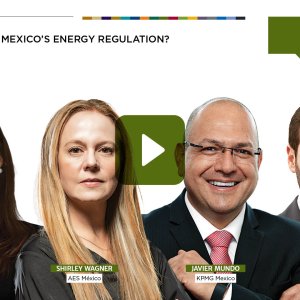
Examining What Is Next for Mexico's Energy Regulation
 By Perla Velasco | Journalist & Industry Analyst -
Wed, 03/01/2023 - 12:52
By Perla Velasco | Journalist & Industry Analyst -
Wed, 03/01/2023 - 12:52
According to experts, Mexico is one of the countries with the most complex bureaucracies in the world, making it hard to comply with regulations. A complicated shift away from privatization back to greater state control adds further uncertainty. Still, many companies and entrepreneurs can see the potential Mexico has to develop the energy industry.
President López Obrador’s administration has been characterized by constant changes in regulation on the back of its mission to strengthen state companies. This has created great discontent and uncertainty in the private sector. According to Fitch Ratings, this regulatory uncertainty fosters a negative outlook for the Mexican energy industry.
This situation also created discord between Mexico and its main trade partners, Canada and the US, as both requested consultations regarding Mexico’s energy policy, among other topics that have affected foreign companies. This shift in energy policy has stalled foreign investment, and FDI numbers have decreased over the past few years. The highest FDI was recorded in 2018, with US$4.8 billion. This figure decreased in 2019 to US$1.6 billion and reached its lowest level in 2021 with US$584 million.
Regardless, experts agree that Mexico still offers a certain level of certainty as federal regulation has effectively remained mostly unchanged, though this does not mean opportunities will not be hampered by public policy and regulation. “There has been a decrease in the development of projects since 2018 in addition to those pending from the past administration. This delay is not compatible with the increasing energy demand. We have seen relative openness in third-level regulations coming from CRE recently, but it does not this will solve the problem of bureaucratic delays,” says Carlos Ochoa, Partner Energy Practice, Holland & Knight.
Sofia Tamayo, Regulatory and Social Responsibility Director, Zuma Energía, concurs and said that the largely unaltered framework imbues the sector with potential. “The regulatory framework remains. It is also up to us to know how to translate it and take advantage of the opportunities,” she said, adding that “associations are a fundamental actor. They are an agent that can really expand this dialogue and communication with the government, which has worked very well in the sector.”
As the López Obrador administration approaches its last year, the regulatory status quo remains in a similar place compared to three years ago because constitutional alterations were voted down. The government is nevertheless keen to keep protecting PEMEX and CFE in 2023, which may be done at the expense of private companies.
Nonetheless, Javier Mundo, Head of Energy and Natural Resources, KPMG Mexico, sees advantages of international pressure from trade partners looking to protect private interests as USMCA consultations accelerated the approval of several permits over the past few months. “There are ways to comply with Mexico’s regulatory landscape. It is also possible to generate some pressure at different levels to gain more certainty. International mechanisms help as a counterweight for regulatory issues. In this context, the consultations with the US and Canada seem to have accelerated permit processing over the past few months,” explained Mundo.
Furthermore, the experts shared there are various ways for the private sector to cooperate with authorities to reach mutual agreements. Ochoa explained that one way for the private sector to reach a middle ground with regulatory entities is considering the state entities’ objectives. “Perhaps, some organizations do not like the active participation of private players that much. Ultimately, [state companies] seek to create projects with greater benefit for them that align with their social objectives, like gaining a greater share of national participation, for instance. They try to integrate these aspects into their action plans. For the private sector, these are the points where it can complement this mission and take this vision into account for the development of private projects,” said Ochoa.
Shirley Wagner, General Counsel, AES Mexico, said she is hopeful that a clear and sincere dialogue is possible to build better regulation in Mexico, which is essential to further implement technologies that favor Mexico’s energy security. “Dialogue is necessary. We need the technology and experience from other countries and companies for our energy transition. It is clear that Mexico is interested in nearshoring but it must develop appropriate regulations and policies to make it a success. We also must make more progress on social issues and the impact generated by energy projects. Several advances have certainly been made but it is necessary to speed up the process of improvement,” says Wagner.
Experts agreed that Mexico’s regulation needs further development if the country is to reach its energy goals and take advantage of nearshoring. However, the private and public sectors have different visions on how to approach this issue. It is therefore key that more bridges are built between the two actors.
















